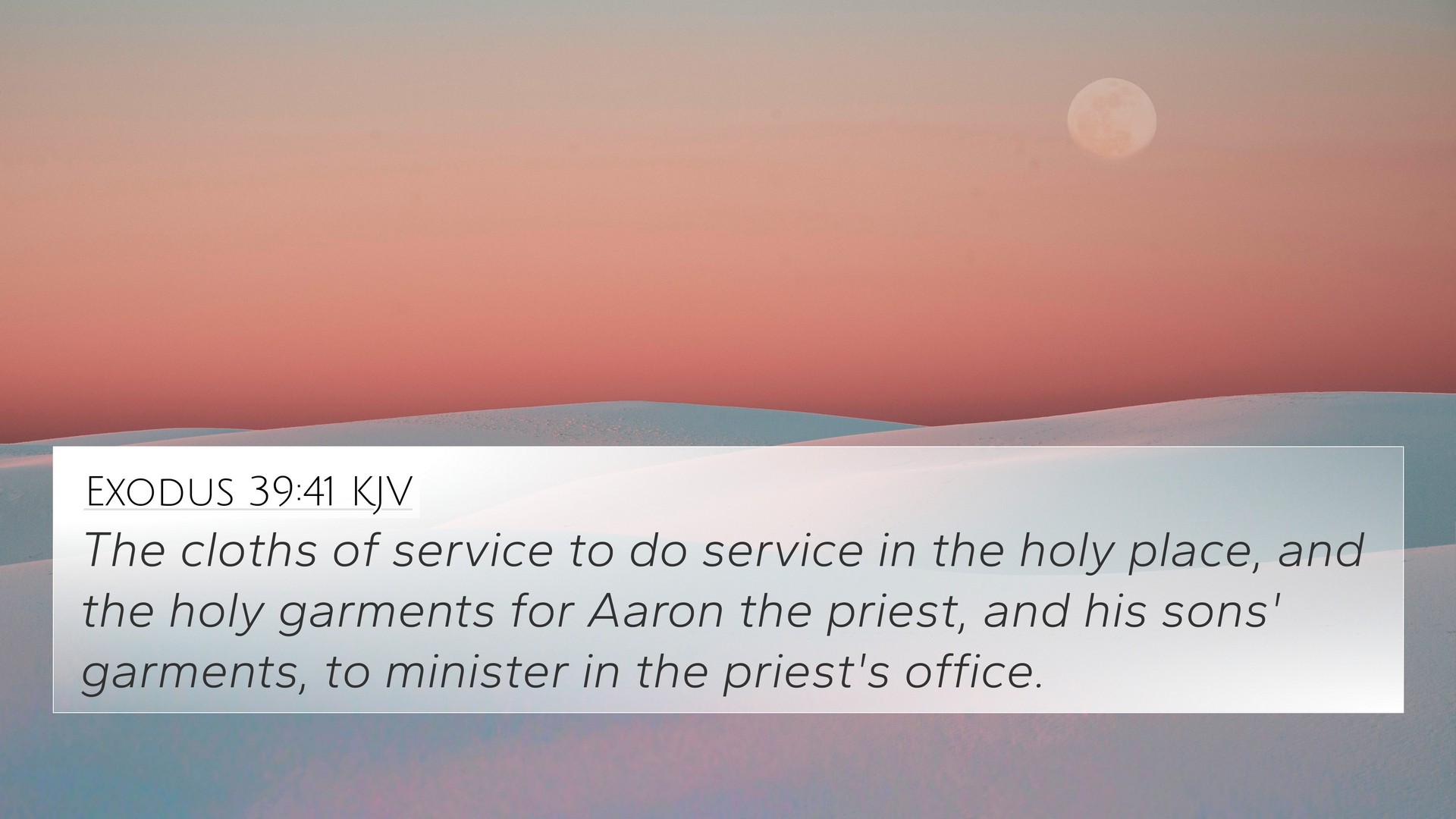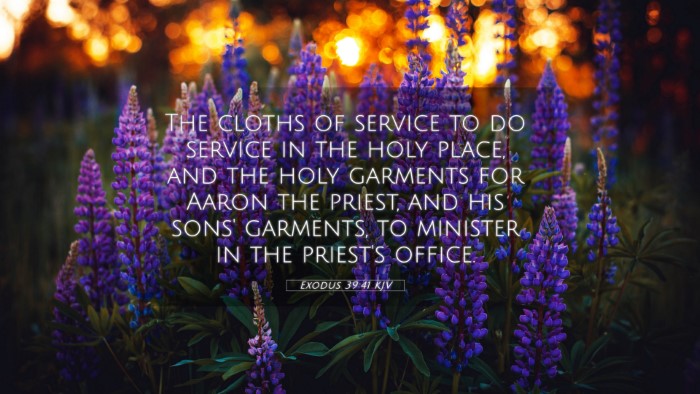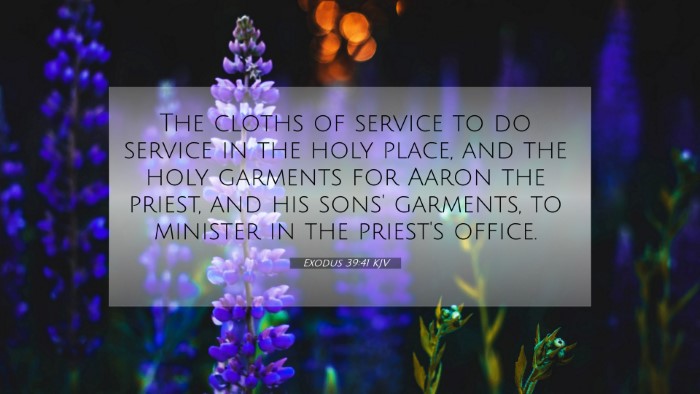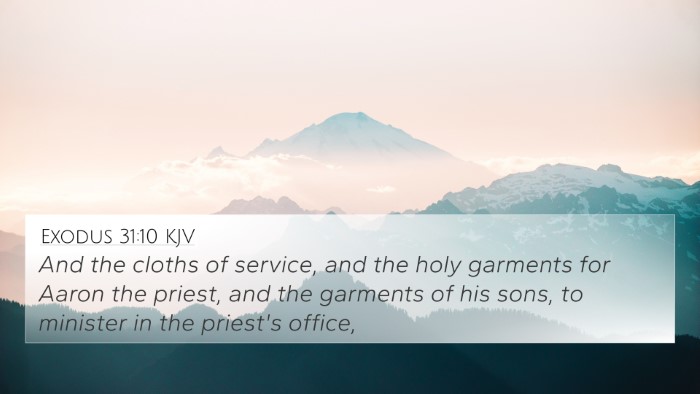Meaning and Interpretation of Exodus 39:41
Exodus 39:41 states: "The cloths of service to do service in the holy place, and the holy garments for Aaron the priest, and his sons' garments, to minister in the priest's office." This verse highlights the detailed preparation and dedication involved in the priestly garments and the objects used in the service of God, emphasizing the importance of holiness in worship.
Summary of Insights from Public Domain Commentaries
Matthew Henry's Commentary
Henry stresses the meticulousness of the work undertaken and its significance. Every item mentioned had a purpose, symbolizing the separation unto God. The priestly garments served not only practical functions but also spiritual ones, embodying the beauty and purity required for serving in the presence of the Lord. The garments and service reflect the necessity of preparation in approaching God, pointing to the spiritual truths about holiness and reverence in worship.
Albert Barnes' Notes
Barnes elaborates on the significance of the "cloths of service" and their connection to the role of priests in Israel. He notes that the preparation of these items symbolizes the importance of order and preparation in divine service. The emphasis on the garments for Aaron and his sons showcases the seriousness of priesthood and how the right attire corresponds to the sacred tasks they are assigned, representing an outward expression of their consecrated status before God.
Adam Clarke's Commentary
Clarke expounds on the types of garments worn by the priests, explaining their symbolic meanings and the intricate details involved in their craftsmanship. He discusses how these garments not only served their ceremonial purposes but also represented spiritual truths, such as the righteousness and purity of Christ, as seen in the New Testament. He stresses the theological implications of clothing in relation to identity and a believer's status before God.
Thematic Connections
This verse connects various themes within the Bible including:
- Holiness: The priestly garments signify holiness—only those wearing them could enter the sacred space.
- Service: The verse emphasizes the idea of dedicated service to God through priestly roles.
- Preparation: Shows the necessity of preparation in worship, highlighting God's order in the practices of His people.
- Divine Calling: Affirms the unique role of the priest as intermediaries between God and the people.
- Symbolism: Garments are emblematic of righteousness, mirroring how believers must be clothed in Christ's righteousness.
Cross-References
This verse can be cross-referenced with the following biblical passages:
- Exodus 28:2-4: Details the making of the priestly garments.
- Leviticus 8:7-9: The consecration of Aaron and his sons.
- Hebrews 5:4-5: Discusses the priesthood of Christ and His divine appointment.
- 1 Peter 2:9: Believers as a chosen generation and royal priesthood.
- Revelation 19:8: The fine linen worn by the Bride, symbolizing righteousness of the saints.
- Isaiah 61:10: The garment of salvation and robe of righteousness.
- Romans 13:14: The call to put on the Lord Jesus Christ.
Importance of Understanding Cross-References
Understanding the connections between Bible verses enhances the depth of study. Cross-referencing offers a rich exploration of themes, doctrines, and principles that transcend individual passages. Here are some ways to utilize cross-references:
- Tools for Bible Cross-Referencing: Use a Bible concordance or online reference tools for effective cross-referencing.
- Bible Cross-Reference Guides: Follow comprehensive guides that point towards thematic connections.
- Identifying Connections: Cultivate an understanding of how Old and New Testament themes intertwine.
Conclusion
The verse, Exodus 39:41, stands as a significant reminder of the sacredness of God's ordained worship and the importance of preparation in serving Him. The insights from biblical commentaries provide depth to the understanding of not only the text but its implications in worship, priesthood, and the believer's relationship with God. By exploring cross-references, one can discover a network of scriptural truths that reinforce and elaborate on the themes presented in this verse.





